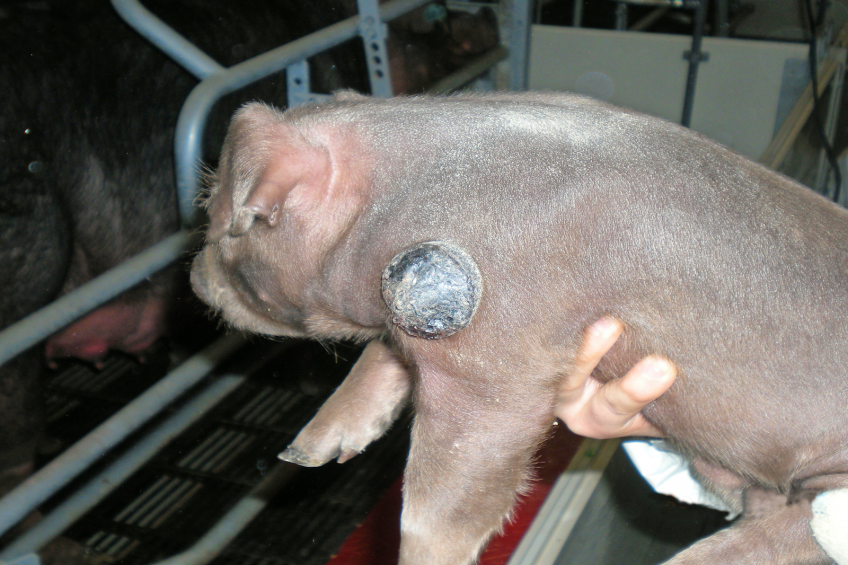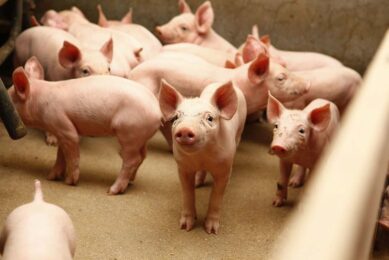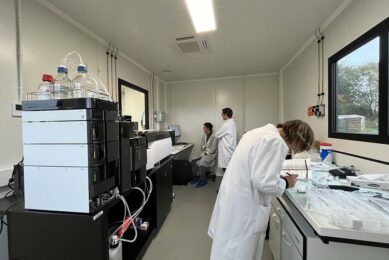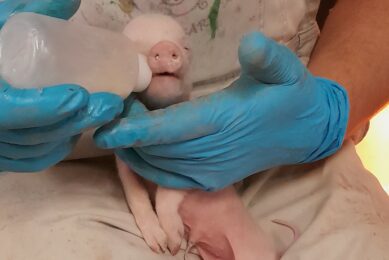Genetic defects in pigs and how to deal with them

Genetic defects arise from abnormalities in the genome. Many are visible at birth (congenital defects) but others manifest through the growth stages to end marketing and some are only identified after slaughter. Which are the most common?
Nearly 200 defects have been recorded in the scientific literature ranging from extremely rare to common. Details of all of these can be found in the Online Mendelian Inheritance in Animals (OMIA) database. Among other information that this excellent facility outlines are possible modes of inheritance and key references for each trait. It also includes information on blood group systems and the genetic factors that influence coat colour inheritance. Among the best resources for images of most defects is in the classic publication ‘A colour atlas of diseases and disorders of the pig’ by Smith, Taylor and Penny.
The incidence of specific defects varies between farms. Table 1 shows the mean incidence of key defects and their typical range from a recent survey of published scientific reports. The main conclusions from these data are:
- On average, splayleg was the most common defect, followed by inguinal and scrotal hernias.
- Umbilical hernia, cryptorchidism and atresia ani were all important.
- A herd level of between some 2.3% to 5.0% may be considered ‘normal’.
Huge economic cost accruing from defects
The industry is sometimes unaware of the huge economic cost that accrues from defects, primarily from mortality but also from reduced performance. The global cost of mortality alone may be estimated from the mean incidence of defects and the estimated death rate from affected pigs for four main defects (crytorchidism is not included as it does not increase mortality), see Table 2.
The overall death rate of 0.263% equates to the death of 1 pig in every 380 born alive. Based on the 2015 FAO data for global annual pig production, this is equivalent to loss of some 3,340,000 piglets. With a modest estimated marginal cost of US$30 per pig this means that just 4 defects are costing the global industry over US$100 million annually.
One factor that influences the range in the incidence of defects between populations is genotype. In general, the Landrace breed has a higher defect incidence than the Large White breed for all the most important defects other than umbilical hernia. In addition, breeds with small populations tend to have a higher number of defects. Finally, the Duroc breed and certain miniature breeds developed for medical research have a significantly higher incidence of skin melanoma.
Genetic defects include ‘traits’ that are under the control of a single gene (monogenic disorders) to those due to the combined action of many genes (polygenic) and/or involving non-genetic or discrete environmental factors. In addition there are disorders that are familial (tend to run in families) but where there is insufficient evidence to conclude which genes might be involved.
Malignant hyperthermia
The OMIA database list 44 defects caused by a single gene. The best known defect is malignant hyperthermia, otherwise known as the porcine stress syndrome (PSS) or halothane stress mutation. This is a very unusual syndrome because of its major effects through just one letter change in the genetic DNA code. The key positive effects of increased lean content and ham size led to a rapid increase in gene frequency in most pig populations in the 1970s and 1980s. However, the realisation that there were the disadvantages of sudden death, stress and poor meat quality led to the discovery of the molecular basis of the mutation in 1991 and the development of a simple DNA test to allow eradication in virtually all commercial pig genotypes.
Immotile short-tail sperm defect
Another important monogenic trait is immotile short-tail sperm defect (ISTS) which results in lowered sperm count and increased sperm abnormalities in boars. Although rare, ISTS can have a significant effect if it becomes concentrated in an AI programme as it did in Finland some years ago in their Large White population. However, they were able to get over the problem by using marker and gene-assisted selection involving the gene called SPEF2 (sperm flagellar 2).
Inguinal, scrotal and umbilical hernias as well as atresia are all examples of traits that are almost certainly polygenic disorders but also present a familial effect. Several research groups are using DNA technologies in an attempt to locate specific molecular regions involved in these problems.
Splay leg is complex as it involves multiple factors. As well as genetic liability, there appears to be a sex-linked factor as it is more common in male piglets. Other contributing factors include nutrition (choline and methionine), mycotoxin (zearalenone) and environment (particularly slippery floor surfaces).
Sudden major problems
For the producer, defects can suddenly become a major problem because of ‘storms’ where the incidence is significantly higher than the typical levels noted above, particularly for short periods. This is often true for the hernias and cryptorchidism where an incidence of 5.0% or more is not uncommon. These ‘storms’ often appear difficult to control and can lead to interesting discussions with genetic suppliers. Where DNA tests are not available for particular traits the following factors should be considered on-farm:
- It is unwise to use surgically ‘corrected’ animals for future breeding. Examples are in cases of atresia and hernias.
- Where the incidence rises rapidly above typical levels, investigate the possibility of mycotoxins in the feed and check that diet specifications, particularly for amino acids, are at recommended levels.
- Environmental factors may be important so audit changes in a herd which may coincide with increasing defects. Examples are rectal prolapse (increased coughing, diarrhoea, fighting, new accommodation with incorrect floor fall), inguinal/scrotal hernia (correct pig handling), umbilical hernia (handling of newborn piglets and correct naval clamping) and splayleg (floor condition in the farrowing house).
- As a last resort in a herd with a high incidence causing severe economic loss, consider a culling programme of affected individuals plus the parents and the sibs. However, keep accurate records to monitor the situation as often the incidence declines independent of the culling programme.
On a final note, it is of interest that many pig defects have the potential to be used as models for human defects. 2 of the most important are malignant melanoma and cryptorchidism. Melanoma is responsible for most human skin cancer deaths and is the only one of the seven most common cancers that is increasing in many countries. Undescended testicle affects some 3% of full-term and 30% of premature infant boys across the globe resulting in reduced fertility and increased incidence of cell tumours. Genome mapping and molecular studies in pigs are actively helping the outcome for these problems, as well as in several other rarer conditions. The corollary is that human genetic research can also help improve pig genetic capabilities for the future.











 Beheer
Beheer WP Admin
WP Admin  Bewerk bericht
Bewerk bericht